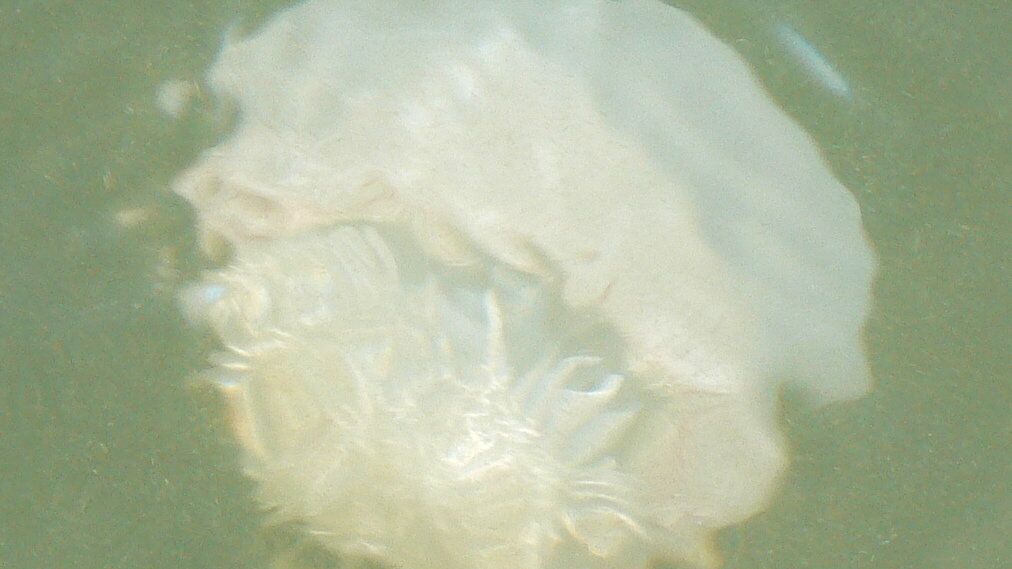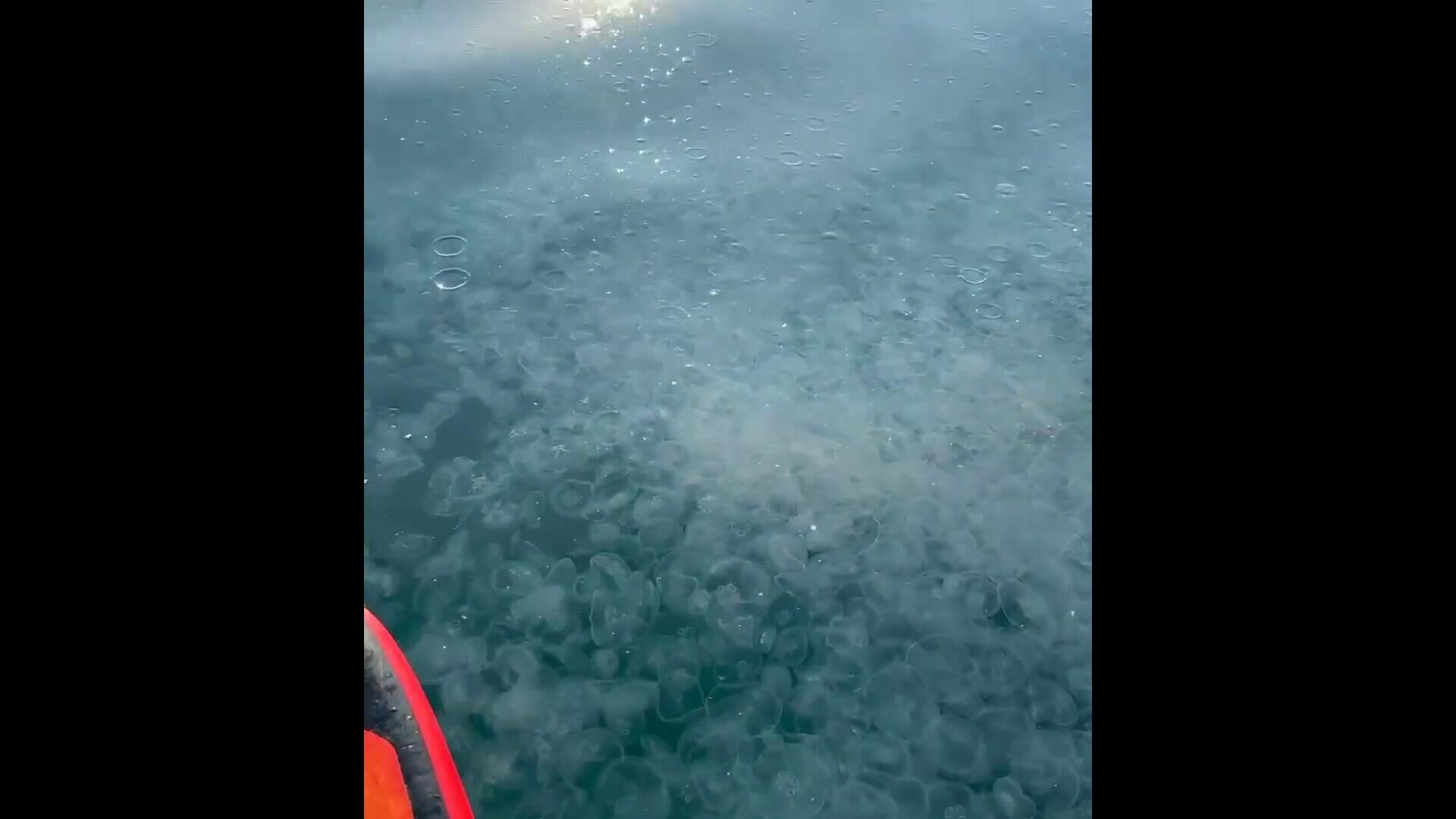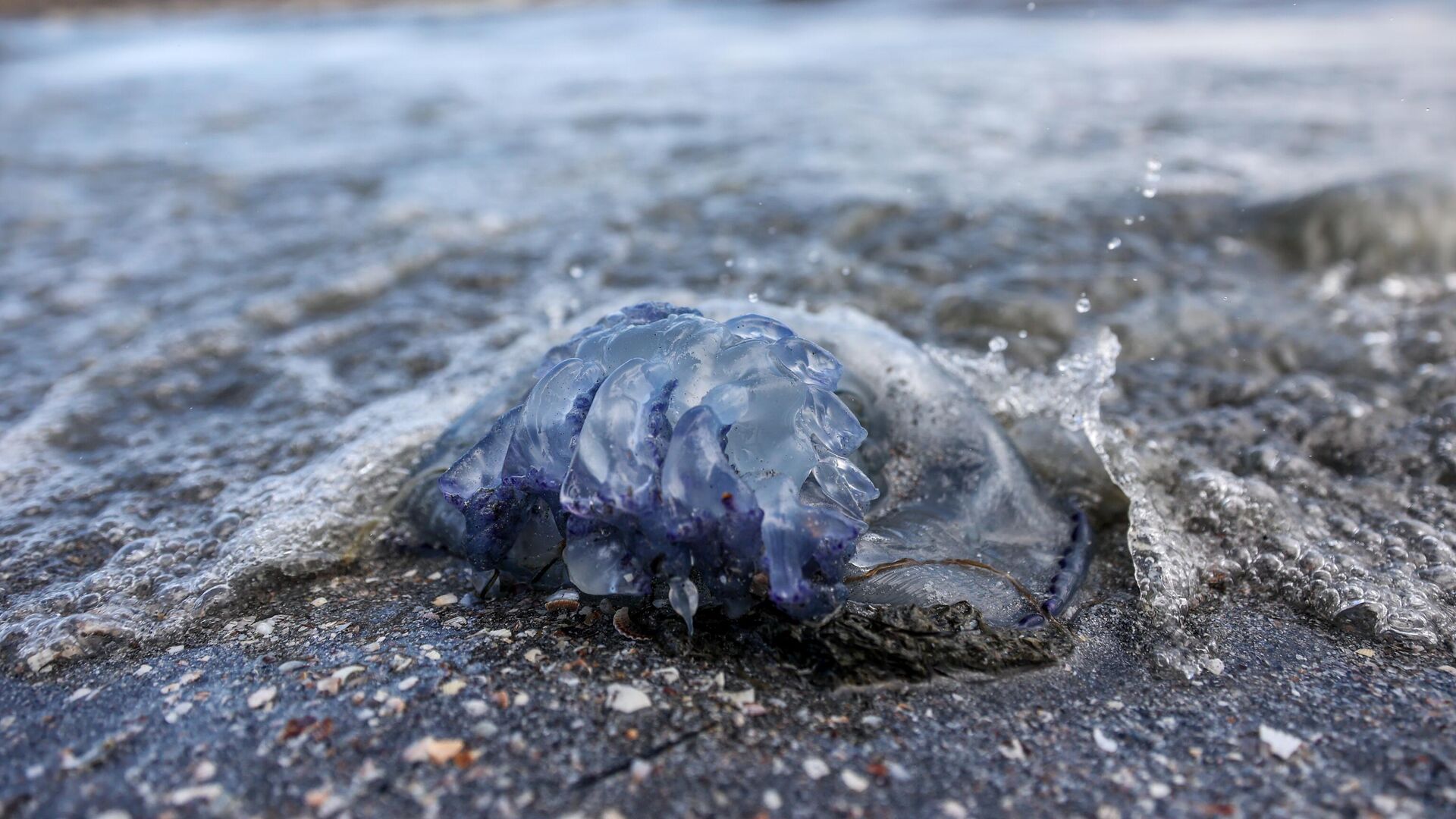
< br />
SIMFEROPOL, July 17Giant clusters of cornet jellyfish have reached the western coast of Crimea, which can be caused, first of all, by strong winds and coastal circulation currents, said a leading researcher at the Department of Animal Physiology and Biochemistry of the Institute of Biology of the Southern Seas named after A.O. Kovalevsky Boris Anninsky.
«»Giant clusters of large jellyfish, according to incoming information, were blown by the wind to the western coast of Crimea, especially near Tarkhankut. This may be caused, first of all, by strong north-westerly winds and coastal circulation currents. On the one hand, such clusters indicate that that their population has grown significantly this year, on the other hand, this may be a special case related to the nature of the weather in July,” Anninsky told the agency. 
According to him, the appearance of cornet jellyfish in such large numbers is rather an anomalous phenomenon, which is associated with strong winds and currents, since they do not deliberately flock together.
Anninsky emphasized that the reason for the abnormal development of the cornet jellyfish population in the Black Sea may be the high abundance of small warm-water plankton and the reduction in the population of the jellyfish’s main competitor, the comb mnemiopsis.
According to the expert, jellyfish are quite active during this period of the year and are often transported by currents along the coast.
Cornermouth jellyfish live in the Black, Azov, Mediterranean and Adriatic seas. They do not pose a great danger to humans, but touching them and swimming near these marine inhabitants is not recommended. The maximum size of the “umbrella” of the cornet jellyfish is 35–40 centimeters in diameter.























































Свежие комментарии